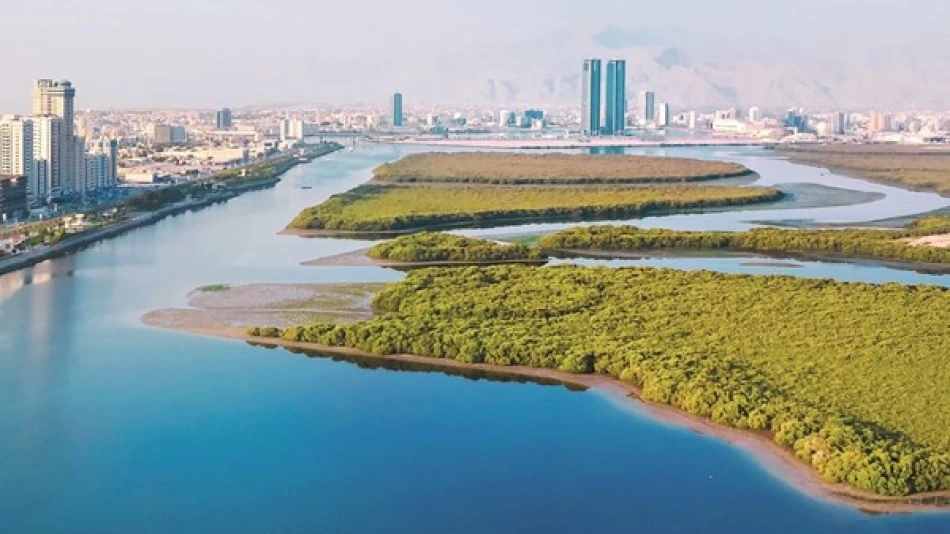
Ras Al Khaimah's Tourism Sector Emerges as the Fastest Growing in the UAE
Ras Al Khaimah Taps Former Tourism Australia Chief to Drive Ambitious 2030 Vision
The UAE's northernmost emirate has appointed Philippa Harrison, former managing director of Tourism Australia, as the new CEO of Ras Al Khaimah Tourism Development Authority. The strategic hire signals RAK's serious intent to transform from a regional destination into a global tourism powerhouse, targeting 3.5 million annual visitors by 2030—a fivefold increase from current levels.
High-Profile Leadership for High-Stakes Growth
Sheikh Ahmed bin Saud bin Saqr Al Qasimi, Chairman of the Executive Committee of Ras Al Khaimah Tourism Development Authority, emphasized that tourism represents a cornerstone of the government's strategy and the emirate's fastest-growing sector. Harrison's appointment comes at a critical juncture, with RAK recording 650,000 visitors in the first half of 2025—already demonstrating strong momentum toward its ambitious decade-end target.
Harrison brings proven credentials from her tenure leading Tourism Australia, where she oversaw marketing campaigns that helped position Australia as a premium long-haul destination despite fierce competition from Asian markets. Her experience navigating post-pandemic recovery and sustainable tourism initiatives will prove invaluable as RAK seeks to differentiate itself in the crowded Middle Eastern tourism landscape.
The UAE's Tourism Diversification Play
RAK's aggressive tourism push reflects the broader UAE strategy of economic diversification away from oil dependence. While Dubai dominates headlines with record-breaking visitor numbers and mega-projects, and Abu Dhabi positions itself as a cultural hub, RAK is carving out its niche in sustainable and adventure tourism.
The emirate's natural advantages—including the UAE's highest peak, Jebel Jais, pristine beaches, and desert landscapes—provide a foundation that Dubai's urban focus cannot replicate. This positioning mirrors successful strategies employed by destinations like New Zealand and Costa Rica, which leveraged natural assets to command premium pricing in the global tourism market.
Sustainable Tourism as Competitive Edge
Harrison's emphasis on RAK as a "global success story" aligns with growing traveler demand for authentic, sustainable experiences. The emirate's commitment to sustainable tourism development could prove prescient as environmental consciousness increasingly influences destination choice, particularly among high-spending Western markets.
Market Implications and Investment Opportunities
The 3.5 million visitor target by 2030 represents more than tourism statistics—it signals substantial infrastructure investment opportunities. Achieving this goal will require significant expansion in hotel capacity, transportation networks, and attraction development. Current visitor numbers suggest RAK needs to maintain compound annual growth rates exceeding 20% to meet its targets.
For investors, RAK's tourism strategy presents a compelling proposition: lower entry costs compared to Dubai's saturated market, government backing for tourism initiatives, and untapped potential in adventure and eco-tourism segments. The appointment of a seasoned international executive like Harrison reduces execution risk and enhances credibility with global tour operators and hospitality brands.
Regional Context and Competitive Landscape
RAK's tourism ambitions unfold against intensifying regional competition. Saudi Arabia's Vision 2030 targets 100 million annual visitors, while Qatar leverages World Cup infrastructure for tourism growth. However, RAK's scale allows for more focused, niche-market strategies that larger destinations cannot pursue effectively.
The emirate's success will likely depend on execution excellence rather than scale advantages—precisely the expertise Harrison brings from Australia's tourism sector, which consistently punches above its weight in global market share despite geographic isolation and high costs.
Most Viewed News

 Layla Al Mansoori
Layla Al Mansoori






